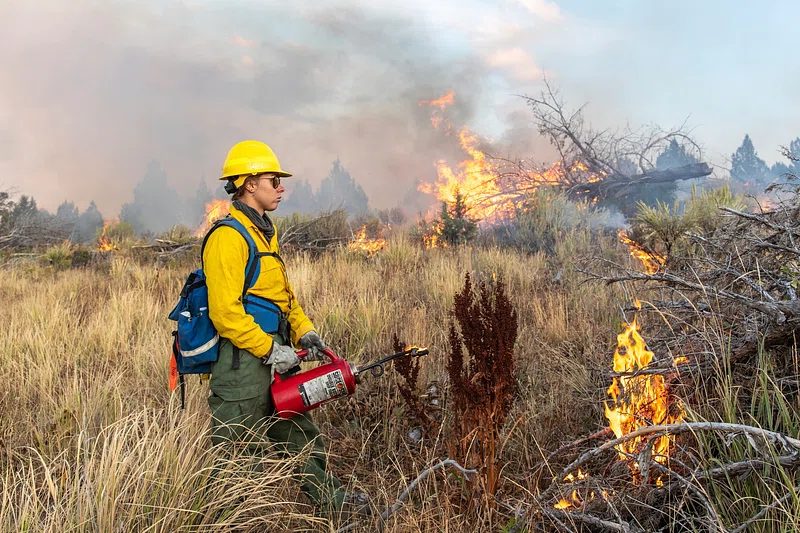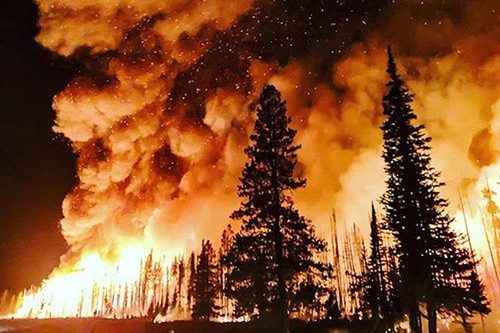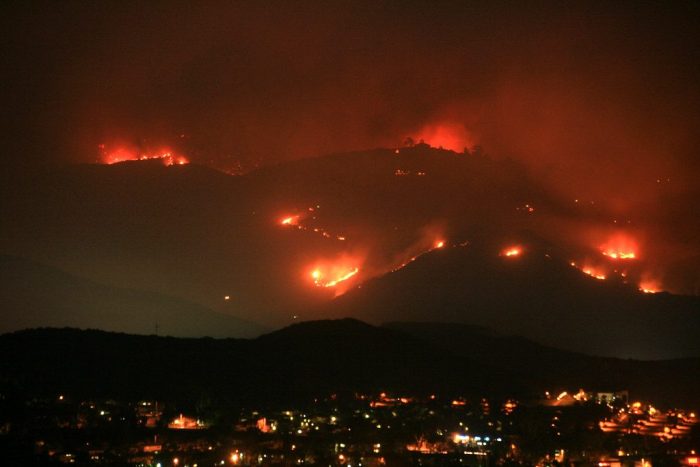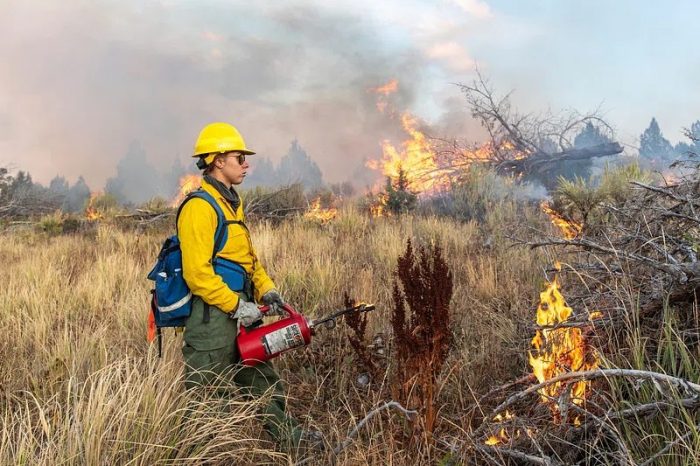



Wildfires have become an increasingly prevalent threat, causing significant financial and emotional strain on homeowners. The rising frequency and intensity of these fires have led to substantial property losses, displacing families and devastating communities. In addition to the immediate destruction, wildfires also drive up rebuilding costs, insurance premiums, and maintenance expenses for affected homeowners. As the risks increase, many property owners are looking for more sustainable and resilient solutions to safeguard their investments.
One of the most effective ways to mitigate wildfire damage is through fire-resistant construction. Utilizing fire-resistant materials and adhering to stringent building codes can substantially reduce the likelihood of a home being destroyed by fire. But does investing in fire-resistant construction truly save money in the long run? While the upfront costs may be slightly higher than traditional building methods, the long-term financial benefits—including lower insurance premiums, decreased repair expenses, and increased property value—often outweigh these initial expenses.
This article delves into the costs associated with fire-resistant materials compared to traditional construction, examines potential insurance premium reductions, and evaluates the long-term financial benefits for homeowners and developers. We will also explore case studies of communities that have successfully implemented fire-resistant construction strategies and examine how proactive planning can make a significant difference in financial outcomes. By understanding the economic advantages of fire-resistant construction, homeowners and developers can make more informed decisions that ensure both safety and financial sustainability in wildfire-prone areas.

In recent years, wildfires have caused unprecedented damage to residential areas, leading to billions of dollars in property loss and displacement of thousands of families. The increasing encroachment of developments into wildland-urban interfaces has exacerbated the vulnerability of homes to wildfires, making it crucial for homeowners, builders, and policymakers to reassess construction strategies.
As climate change continues to drive hotter, drier conditions, the frequency and intensity of wildfires are expected to rise, increasing the financial and emotional toll on affected communities. Insurance rates in fire-prone areas have skyrocketed, and some homeowners struggle to find coverage at all. These challenges have sparked a growing interest in fire-resistant construction, as it offers a potential solution to mitigate the risks and costs associated with wildfire damage.
This heightened awareness has led to significant advancements in fire-resistant building materials and techniques, with many states enacting stricter building codes to enhance resilience. By understanding the factors contributing to wildfire vulnerability and taking proactive steps to incorporate fire-resistant designs, homeowners can better protect their investments while potentially lowering insurance costs and ensuring a safer future.
Fire-resistant construction aims to protect homes from ignition due to flames, radiant heat, and embers. Regulations such as Chapter 7A of the California Building Code set stringent material and design requirements to reduce wildfire risks in Wildland-Urban Interface (WUI) zones. Compliance with these codes ensures better resilience and greater eligibility for insurance savings.
Choosing fire-resistant materials can lead to long-term savings by reducing maintenance and repair costs. Unlike traditional materials, fire-resistant options are designed to withstand extreme conditions, reducing the likelihood of significant damage in the event of a wildfire. Additionally, these materials—such as fiber cement siding and composite decking—are highly durable and environmentally friendly, requiring less frequent replacement than traditional materials.
Over time, the investment in fire-resistant materials can pay off through lower repair costs and reduced risk of structural damage. These materials also contribute to sustainability by minimizing waste and promoting energy efficiency. Many homeowners find that the initial higher cost is offset by the longevity and resilience of these products, ensuring that homes remain structurally sound for decades with minimal upkeep. Furthermore, incorporating these materials into home design can enhance property values, as buyers increasingly prioritize safety and long-term durability in their purchasing decisions.

A common misconception is that building with fire-resistant materials significantly increases construction costs. However, studies indicate otherwise. A report by the Insurance Institute for Business & Home Safety (IBHS) found negligible cost differences between building a typical home and one constructed using wildfire-resistant materials and design features. Specifically, the study noted that constructing a home to optimal wildfire resistance would increase overall costs by approximately $18,200 to $27,100, but this investment yields greater long-term benefits.
Insurance companies recognize the reduced risk associated with fire-resistant homes and often offer premium discounts to incentivize such construction. For instance, State Farm provides discounts for homes with impact-resistant roofing materials and for policyholders who take proactive steps to protect their homes from wildfires. Similarly, Allstate offers discounts for installing protective devices like fire alarms and security systems. While specific discount percentages vary based on location and individual circumstances, these incentives can lead to substantial savings over time.
While the initial investment in fire-resistant materials may be slightly higher, the long-term financial benefits often outweigh these upfront costs. Homes built with fire-resistant features are less likely to suffer catastrophic damage during wildfires, leading to reduced repair and maintenance expenses. Additionally, the potential for lower insurance premiums further enhances the financial advantages. Over time, these savings can offset the initial investment, making fire-resistant construction a financially sound decision.
Adhering to building codes designed for wildfire-prone areas is crucial for ensuring safety and maximizing insurance benefits. For example, Chapter 7A of the California Building Code outlines specific requirements for materials and construction methods in wildfire-prone areas. Compliance with these codes may involve additional costs, but they are essential for both safety and eligibility for insurance discounts. The IBHS’s FORTIFIED Home program also provides standards for building resilient homes, which can lead to insurance savings upon compliance.
Real-world examples underscore the financial prudence of investing in fire-resistant construction. A study focusing on California homes found that while constructing a home to optimal wildfire resistance would increase overall costs by $18,200 to $27,100, this investment yields greater long-term benefits. These cases highlight that the initial investment in fire-resistant construction can lead to significant savings in repair costs and insurance premiums over time.
Investing in fire-resistant construction offers a compelling financial proposition. The initial costs are often comparable to traditional construction, and the long-term benefits—including reduced maintenance expenses, potential insurance premium discounts, and enhanced property resilience—provide substantial financial advantages. For homeowners and developers, prioritizing fire-resistant materials and designs is not only a safety measure but also a financially strategic decision.
As wildfires continue to pose significant threats, adopting fire-resistant construction practices emerges as a prudent strategy for mitigating financial risks. The combination of comparable initial costs, potential insurance savings, and long-term durability makes fire-resistant construction a wise investment for those looking to protect their assets and ensure safety in wildfire-prone areas.
If you’re a homeowner or developer considering fire-resistant construction, start by consulting with experts in fire-safe building materials and insurance providers to maximize savings. Investing in wildfire-resistant construction is not just about safety—it’s a financially strategic decision that offers peace of mind and long-term economic benefits.